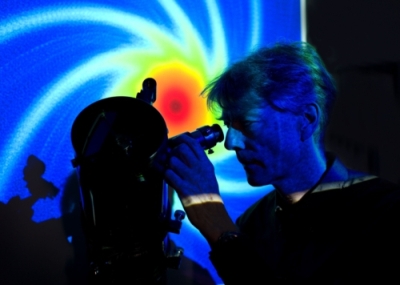IBM and the Netherlands Institute for Radio Astronomy ASTRON recently declared that it has entered into initial five-year collaboration.
 IBM SCIENTIST RONALD LUIJTEN IBM scientist Ronald Luijten is working on exascale computers, Photo credit: IBM Research - Zurich. (PRNewsFoto/IBM) DRENTHE AND ZURICH, NETHERLANDS AND SWITZERLAND
IBM SCIENTIST RONALD LUIJTEN IBM scientist Ronald Luijten is working on exascale computers, Photo credit: IBM Research - Zurich. (PRNewsFoto/IBM) DRENTHE AND ZURICH, NETHERLANDS AND SWITZERLAND
With €32.9 M, the two companies will conduct expedite research with low-power exascale computer systems specific for international Square Kilometre Array (SKA).
The SKA is a global project that intends creating the most sensitive and largest radio telescope in the universe. According to researchers’ forecast, the telescope will be operated with a processing power equal to several millions of fastest computers that currently exists.
ASTRON is among the established scientific partners involved in the international project for SKA development. The telescope, soon after its launch in 2024, will explore dark matter, galaxies, and the ancient origins of the universe that existed 13 B years ago.
Advanced scientific instruments like SKA entails a high-performance computing architecture and data transfer links with more capacity than the existing innovative technology.
In response to this challenge, the scientists at ASTRON and IBM have initiated a five-year collaboration called DOME, which will discover promising technologies for data transport and storage processes, large-scale exascale computing, and streaming analytics that can enable reading , analyzing and storing all the raw data being collected every day. ASTRON and IBM researchers will explore 3D stacked chips and modern accelerators to enhance the energy-efficiency of computing. Furthermore, research will be conducted on novel optical interconnect technologies and nanophotonics optimizing data transfers and high-performance storage systems that utilize tape systems and novel phase-change memory technologies.
A fundamental design based on realistic parameters can be determined by using IBM’s advanced methodologies for modeling and optimizing the large-scale infrastructures’ architecture. The existing system analysis for ASTRON-built low-frequency array (LOFAR) forms the basis for this optimization.